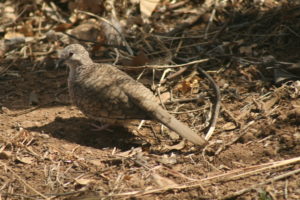
Inca doves are found all along the borderlands and southward into Mexico. The common name should probably be Aztec dove, as the Incas were in Peru and the doves aren’t. But anyway, I had always thought of them as urban and was obviously mistaken. Either that or I have really created a park…”Petey Mesquitey Park. Come see the Inca doves and listen to their incessant cooing!” Or maybe that should be “listen to their incessant, no hope, no hope.” Yikes!
Jojoba is also called goat-nut and pig-nut, deer-nut or to plant geeks like myself, Simmondsia chinensis. The foliage and stems are browsed by wildlife and domestic critters. The nuts are eaten as well, as the common names indicate and the nuts are edible for humans too, but just a few at a time, as too many will act as a laxative. That’s not hard to understand considering the liquid wax the seeds contain. Jojoba is an important commercial plant because of the liquid wax the nut contains, but don’t forget it is also a beautiful wild evergreen shrub. Even Arizona Flora says “it is a rather handsome shrub.” Yeah it is.
A couple notes: The photos are mine. That’s an Inca dove in our yard, just in case you’ve never seen one…whaaa? That’s a flowering jojoba shrub in among the boulders of the Dos Cabezas Mountains and then a close up of a female flower.
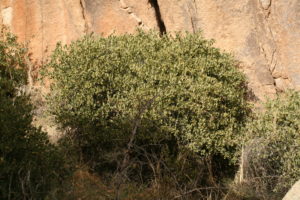
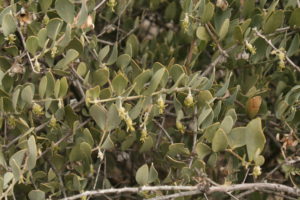
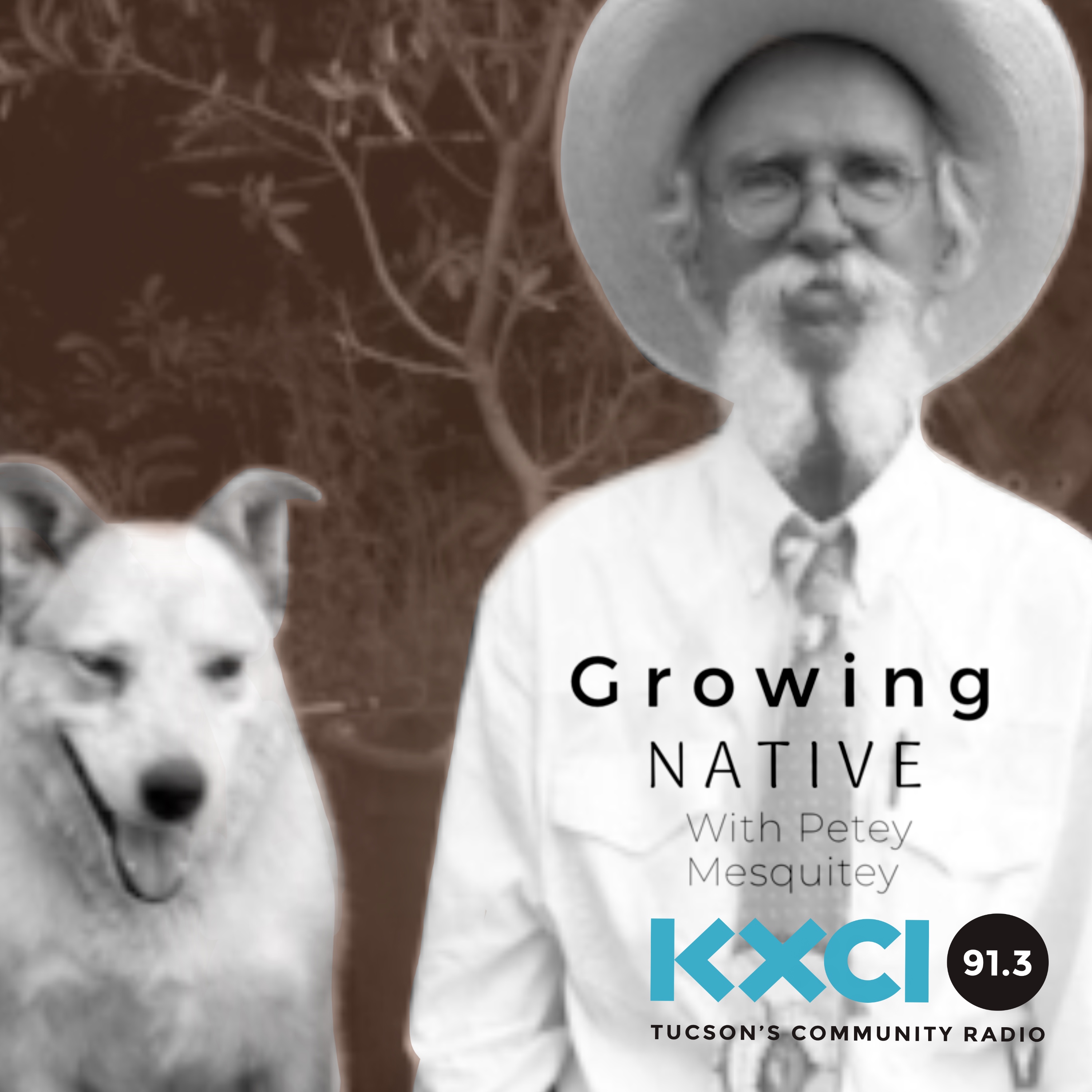
It’s fun to have favorite plants to look for on excursions into the hills. Looking back at photos and my notes, we have been...
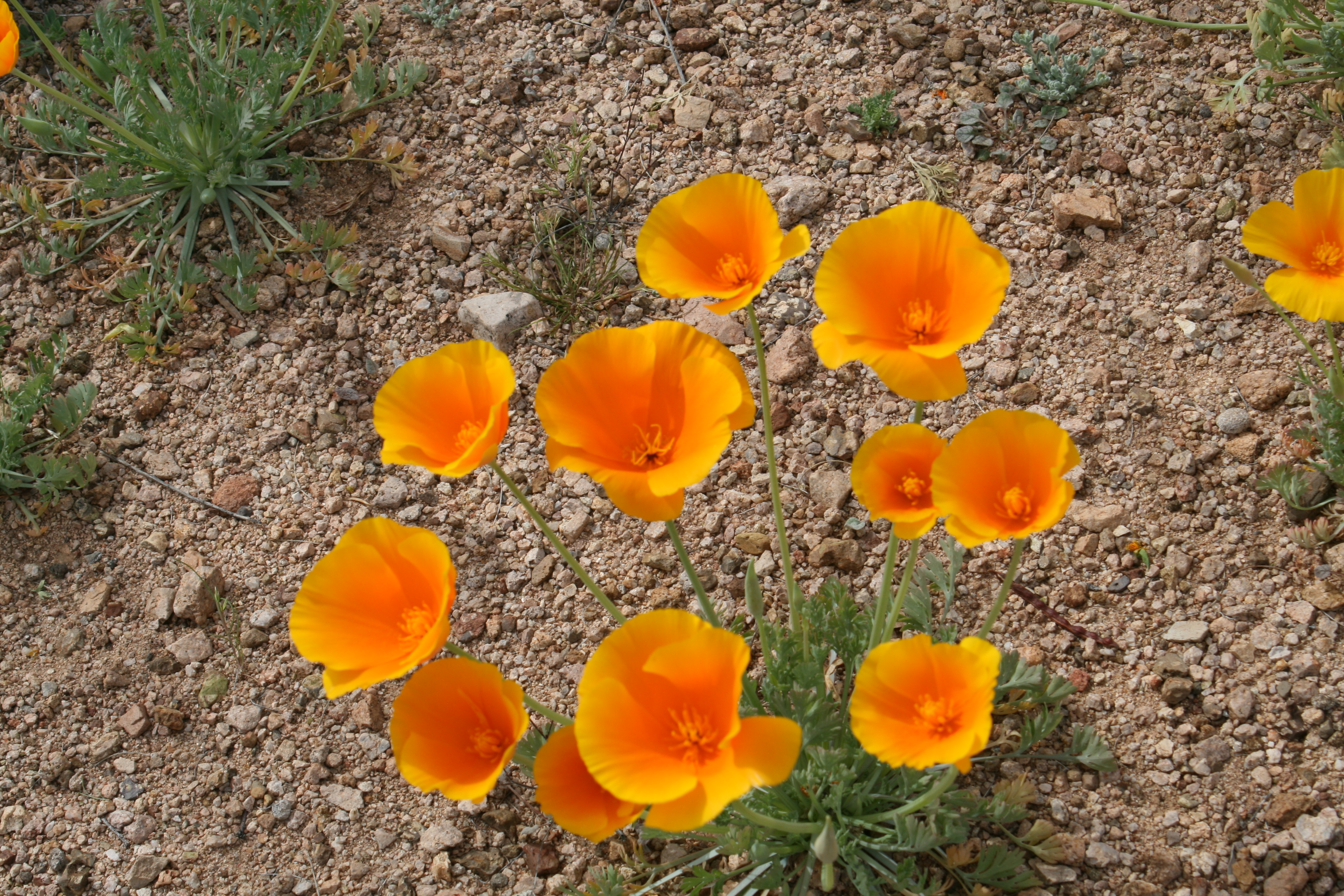
Lesquerella is named in honor of Leo Lesquereaux and Wikipedia reminds me that he was a “Swiss bryologist and a pioneer of American paleobotany.”...
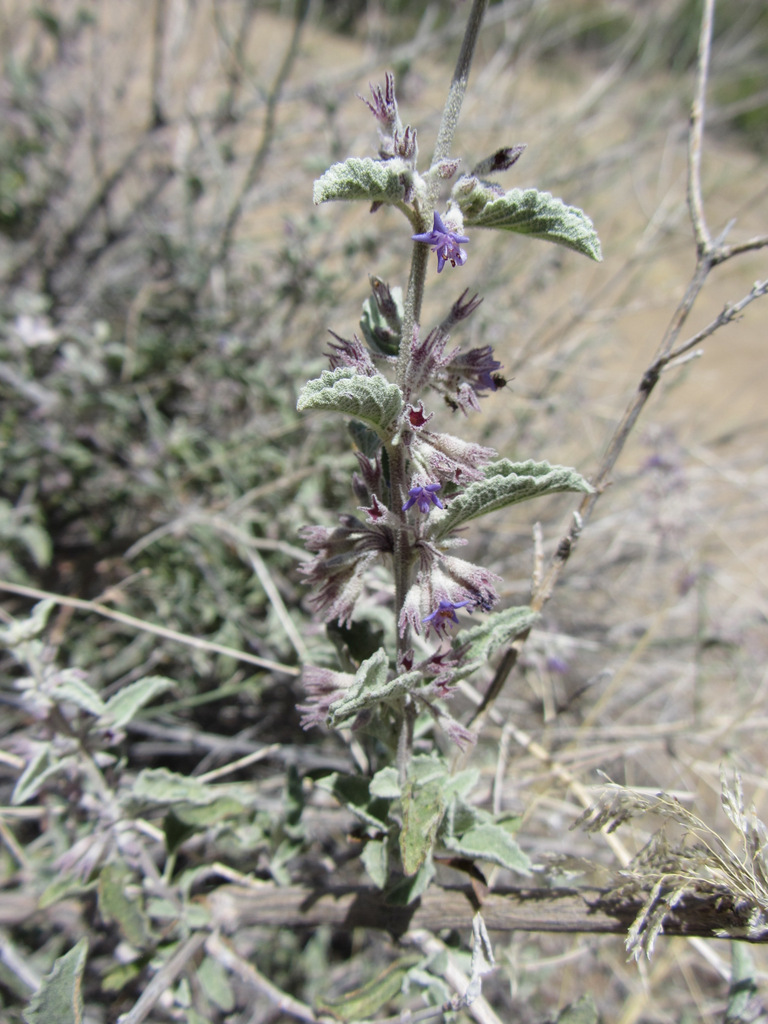
My goodness, there are times that I so miss the Sonoran Desert, especially when I leave the desert grassland and get into the diverse...